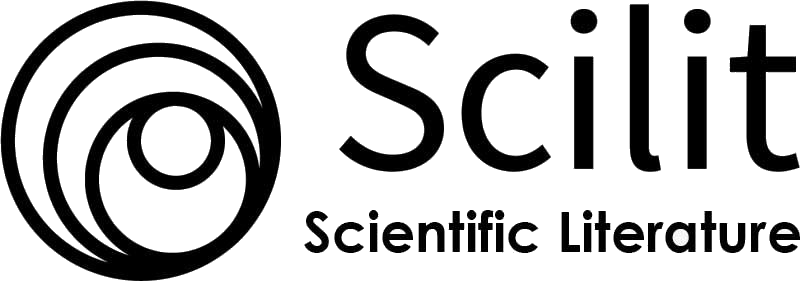Atmospheric Correction of Landsat Image
DOI:
https://doi.org/10.58425/jegs.v2i1.120Keywords:
Atmospheric correction, NDVI, temperatureAbstract
Purpose: The satellite imagery such as Landsat contains water vapour and gases that do interfere with analytical process to lower the result. The research focused on atmospheric corrected and un-corrected image on Normalized Difference Vegetation Index determination. The aim of the paper was atmospheric correction on satellite imagery and the objectives considered were to: (1) discuss the types of atmospheric correction (2) determine the Normalized Difference Vegetation Index using atmospheric corrected image (3) highlight the Normalized Difference Vegetation Index without atmospheric corrected image.
Methodology: The following materials were used for the study, they are Landsat imagery, ArcGIS 10.7 and Idrisi 32 software. Remote sensing and Geographical Information Systems (GIS), were factored in the process of Normalize Difference Vegetation Index (NDVI) determination using bands 4 and 3. Additive rescaling formular was used to extract the temperature values. Analysis of variance was also conducted on the two NDVIs and presented in regression table.
Findings: The study found that atmospheric corrected NDVI started from 0.02 to 1.0 on the scale of measurement while uncorrected NDVI ranges from <61.00 to 201.
Conclusion: The study conclude that corrected satellite imagery gave a good reflectance of the earth features than uncorrected image.
Recommendation: The study recommend that for image studies to be carried out, there should be an atmospheric correction to have a precise result.
References
Abrams, M., Hook, S., & Ramachandran, B. (1999). ASTER User Handbook, Version 2, NASA/Jet Propulsion Laboratory, Pasadena.
Adamsen, F.J., Pinter, P., Barnes, E., LaMorte, R., Wall, G., Leavitt, S., & Kimball, B. (1999). Measuring wheat senescence with a digital camera. Crop Sci 39: 719–724.
Ayolagha, G. (2010). Department of soil Sci, Rivers State University of Science and Technology, Research Journal of Environmental and Earth Sciences 3 (4): 307-313, 2011.
Ayo-Enwerem, C.M., Ahaotu, E.O., Nwogu, C.M., & Esukpa, M. (2017). Haematology and Serum Biochemistry of Starter Broiler fed Diets Contaminated Red Sandalwood (Pterocarpus Santoliniodes) Leaf Meal. Direct Research Journal of Veterinary Medicine and Animal Science. 2(4), 111-114.
Berk, A., Bernstein, L.W., & Robertson, D.C. (1989). MODTRAN: A moderate resolution model for LOWTRAN 7. GL-TR-89-0122, AFGL, Hanscomb AFB, MA, USA.
Casadesus, J., Kaya, Y., Bort, J., Nachit, M.M., Araus, J.L., Amor, S., Ferrazzano, G., Maalouf, F., Maccaferri, M., & Martos, M. et al. (2007). Using vegetation indices derived from conventional digital cameras as selection criteria for wheat breeding in water-limited environments. Ann App Bot 150: 227–236.
Casanova, D., Epema, G.F., & Goudriaan, J. (1998). Monitoring rice reflectance at field level for estimating biomass and LAI. Field Crop Res. 55, 83–92
Chander, G. & Markham, B.L. (2003). Revised Landsat-5 TM radiometric Calibration Procedures, and Post calibration Dynamic Ranges. IEEE Transactions on Geoscience and Remote Sensing, 41, 2674–2677.
Chander, G., Markham, B.L., & Helder, D.L. (2009). Summary of Current Radiometric Calibration Coefficients for Landsat MSS, TM, ETM+, and EO-1 ALI Sensors. Remote Sensing of Environment 113 (2009) 893–903.
Chavez, P. S. (1996). Image-Based Atmospheric Corrections – Revisited and Improved, Photogrammetric Engineering and Remote Sensing, 62, 9, 1025-1036.
Chehbouni, J. Qi. A., Huete, A.R., Kerr, Y.H., & Sorooshian, S. (1994). A Modified Soil Adjusted Vegetation Index. Remote Sens. Environ. 48:119-126.
Chrysoulakis, N., Abrams, M., Feidas, H., & Arai, K. (2010). Comparison of atmospheric correction methods using aster data for the area of Crete: the ATMOSAT project, Int. J. Remote Sens.
Clark, W. A. V. & Hosking, P.L. (1986). Statistical Methods for Geographers. New York: John Wiley & Sons.
Cracknell, A. P., & Hayes, L. W. B. (1991). Introduction to Remote Sensing, (London: Taylor and Francis). Department of Crop and Soil Science, University of Port Harcourt, P.M.B 2353 Port Harcourt, Nigeria. Journal of Environment and Earth Science. www.iiste.org ISSN 2224-3216 (Paper) ISSN 2225-0948 (Online) Vol.5, No.13
Deschamps, P.Y., Herman, M., & Tanre, D. (1983). Modeling of the atmospheric effects and its application to the remote sensing of ocean colour. Applied Optics, 22, 3751- 3758.
Eludoyin. O. S. (2010). Department of Geography and Environmental Management. University of Port Harcourt, Port Harcourt. Research Journal of Environment and Earth Sc. 3(4): 307-313, 2011.
Fallah-Adl, J. J'aJ'a, S. Liang, Y. J. Kaufman & Townshend, J. (1995). Efficient Algorithms for Atmospheric Correction of Remotely Sensed Data, to appear in Proceedings Supercomputer '95, IEEE Computer Society Press.
Forster, B. C., (1984). Derivation of atmospheric correction procedures for LANDSAT MSS with particular reference to urban data. International Journal of Remote Sensing, 5, 5, 799-817.
Gordon, H.R., Brown, J.W., & Evans, R.H. (1988). Exact Rayleigh scaterring calculations for use with the Nimbus-7 Coastal Zone Color Scanner. Applied Optics,27,862-871
Hadjimitsis, D. G., Clayton, C. R. I., & Hope, V. S. (2004a). An assessment of the effectiveness of atmospheric correction algorithms through the remote sensing of some reservoirs, Int. J. Remote Sens., 25, 3651–3674.
Hadjimitsis, D. G., Clayton, C. R. I., & Hope, V. S. (2004a). An assessment of the effectiveness of atmospheric correction algorithms through the remote sensing of some reservoirs, Int. J. Remote Sens., 25, 3651–3674.
Holben, B. N., Eck, T. F., Slutsker, I., Tanr, D., Buis, J. P., Setzer, A., Vermote, E. F., Reagan, J. A., Kaufman, Y. J., Nakajima, T., Lavenu, F., Jankowiak, I., & Smirnov, A. (1998). AERONET - A federated instrument network and data archive for aerosol characterization. Remote Sensing of Environment, 66(1), 1-16.
Holben, B.N., Vermote, E., Kaufman, Y.J Tanr, D & Kalb, V. (1992). Aerosol Retrieval over Land from AVHRR data-Application for Atmospheric Correction. IEEE Trans. on Geosci. and Rem. Sens.,30,212-222
Holme, A. MCR., Burnside, D.G. & Mitchell, A.A. (1987). The development of a system for monitoring trend in range condition in the arid shrublands of Western Australia. Australian Rangeland Journal 9:14-20.
Huete, A.R., & Jackson, R.D. (1988). Soil and atmosphere influences on the spectra of partial canopies. Remote Sens. Environ. 25, 89–105
International Institute for Geo-Information Science and Earth Observation. (2004). Principle of Remote Sensing, Hengelosestraat 99, P.O. Box 6,7500 AA Enschede, Netherlands.
Justice, C.O., Eck, T.F., Tanr, D & Holben, B.N. (1991). The effect of water vapour on the normalized difference vegetation index derived for the Sahelian region from NOAA AVHRR data. Int. J. Remote Sensing, 12, 1165-1187
Kaufman, Y. J., Tanre, D., Remer, L., Vermote, E., A. Chu and Holben, B. (1997). Operational Remote Sensing of tropospheric aerosol over land from EOS moderate resolution imaging spectroradiometer, J. Geoph. Res. Vol. 102, No14, pp17051-17067
Keith, k. (2003). Radiance Conversion of Quick Bird Data. Technical Note
Kleinbaum, D. G., Kupper, L.L & Muller, K.E. (1988). Applied Regression Analysis and Other Multivariable Methods. Boston: PWS-KENT Publishing Company.
Kneizys, F. X., Shettle, E. P., Abreu, L. W., Anderson, G. P., Chetwynd, J. H., Gallery, W. 0., Selby, J. E. A. & Clough, S. A. (1988). Users guide to LOWTRAN 7. Air Force Geophysics Laboratory Hans comb AFB, Massachusetts. AFGL-TR-88-0177.
Kumar, R.., & Silva, L. (1973). Light Ray tracing through a leaf cross-section. Appl. Optics 12, 2950–2954.
Li, Y., Chen, D., Walker, C.N., & Angus, J.F. (2010). Estimating the nitrogen status of crops using a digital camera. Field Crop Res 118: 221–227.
Liu, J.G., &Pattey, E. (2010). Retrieval of leaf area index from top-ofcanopy digital photography over agricultural crops. Agr Forest Meteorol 150: 1482–1490.
Ma, B.L., Morrison, M.J., & Dwyer, L.M. (1996). Canopy light reflectance and field greenness to assess nitrogen fertilization and yield of corn. Agronomy J. 88:915-920.
Mathew, M. G. (2015). Converting Advanced Himawari Imager (AHI) Radiance Units Cooperative Institute for Meteorological Satellite Studies (CIMSS) University of Wisconsin-Madison E-mail: matg@ssec.wisc.edu
Mullan, D., & Reynolds, M. (2010). Quantifying effects of ground cover on soil water evaporation using digital imaging. Funct Plant Biol 37: 703–712.
Roderick, M., Smith, R.C.G., & Ludwick, G. (1996). Calibrating long term AVHRR- derived NDVI imagery. Remote Sensing of Environment 58: 1-12.
Roger, J.C., Eric, V & Nazi, E. S. (1994). Atmospheric Correction of MAS data during SCAR- An experiment. Atmospheric Sensing and Modeling, Rome, Italy, September 29-30, SPIE proceedings, Vol 2311, pp 83-89.
Rouse, J. W., Haas, R.H., Schell, J.A., & Deering, D.W. (1973). Monitoring vegetation systems in the Great Plains with ERTS, Third ERTS Symposium, NASA SP-351 I, 309- 323.
Running, S.W., Justice, C., Salomonson, V., Hall, D., Barker, J., Kaufman, Y., Strahler, A., Huete, A., Muller, J.P., Vanderbilt, V., Wan, Z.M., Teillet, P., & Carneggie, D. (1994). Terrestrial remote sensing science and algorithms planned for EOS/MODIS.
Song, C., Woodcock, C.E., Seto, K.C., Lenney, M.P., & Macomber, S.A. (2001). Classification and change detection using Landsat TM data: when and how to correct atmospheric effects? Remote Sensing of Environment, 75, 230-244.
Tanré, D., Deroo, C., Duhaut, P., Herman, M., Morcrette, J.J., Perbos, J. & Deschamps, P.Y. (1990). Description of a computer code to simulate the satellite signal in the solar spectrum: the 5S code. International Journal of Remote Sensing, 11 (4), 659-668.
Tanré, D., Holben, B.N., & Kaufman, Y.J. (1992). Atmospheric correction algorithm for NOAA-AVHRR products: theory and application. IEEE Transactions on Geoscience and Remote Sensing, 30 (2), 231-248.
Thekaekara, M. P., Kruger, R., & Duncan, C.H. (1969). Solar Irradiance Measurements from a Research Aircraft. Applied Optics, 8, 8, 1713-1732.
Turner, R. E., & Spencer, M. M., (1972). Proceedings, Eighth International Symposium on Remote Sensing of the Environment, Vol. II, 895-934.
Vermote, E.F., Tanré, D., Deuzé, J.L., Herman, M., & Morcrette, J.J. (1997). Second Simulation of the Satellite Signal in the Solar Spectrum, 6S: An Overview. IEEE Transactions on Geoscience and Remote Sensing, 35 (3), 675-686.
Wokocha C.C., & Omenihu E.R. (2015). Land Resources Appraisal and Management Activities using Remote Sensing Techniques: Case Study of Akpor Town, Rivers State
Downloads
Published
How to Cite
Issue
Section
License
The authors retain the copyright and grant this journal right of first publication. This license allows other people to freely share and adapt the work but must give appropriate credit, provide a link to the license, and indicate if changes were made. They may do so in any reasonable manner, but not in any way that suggests the licensor endorses them or their use.










